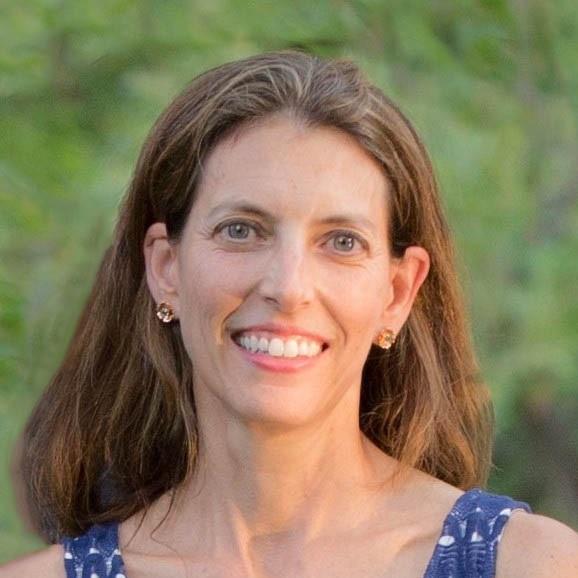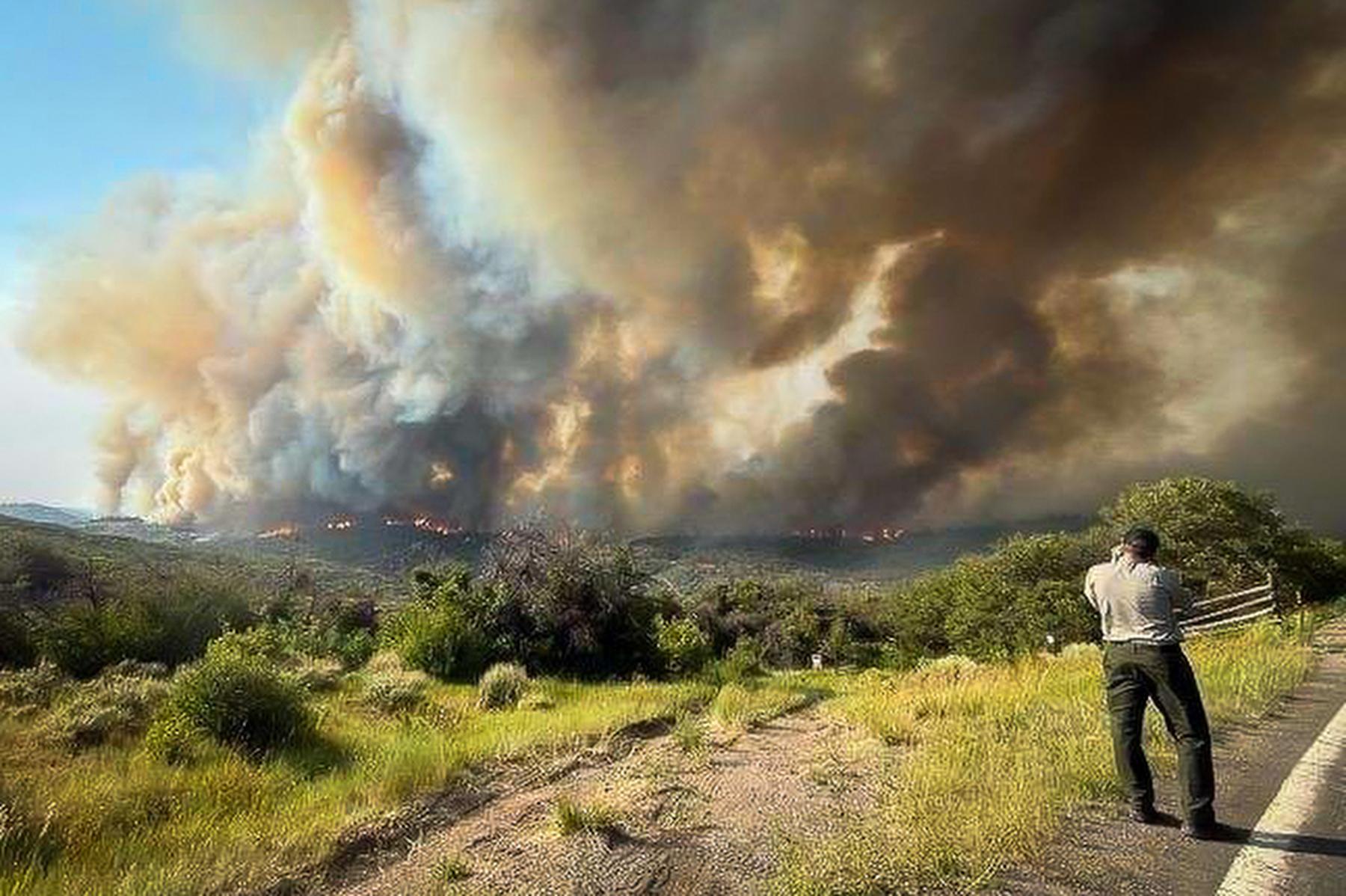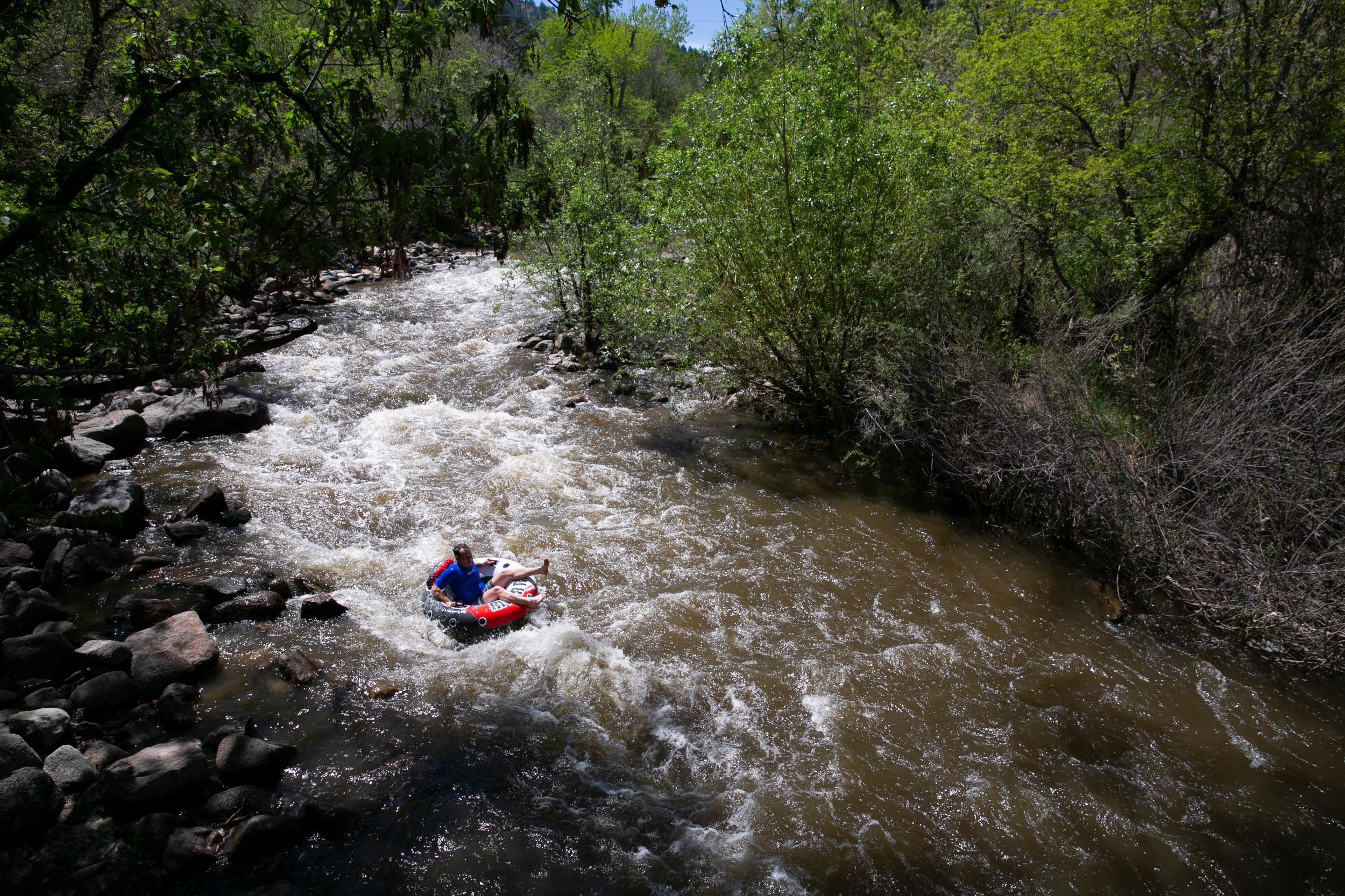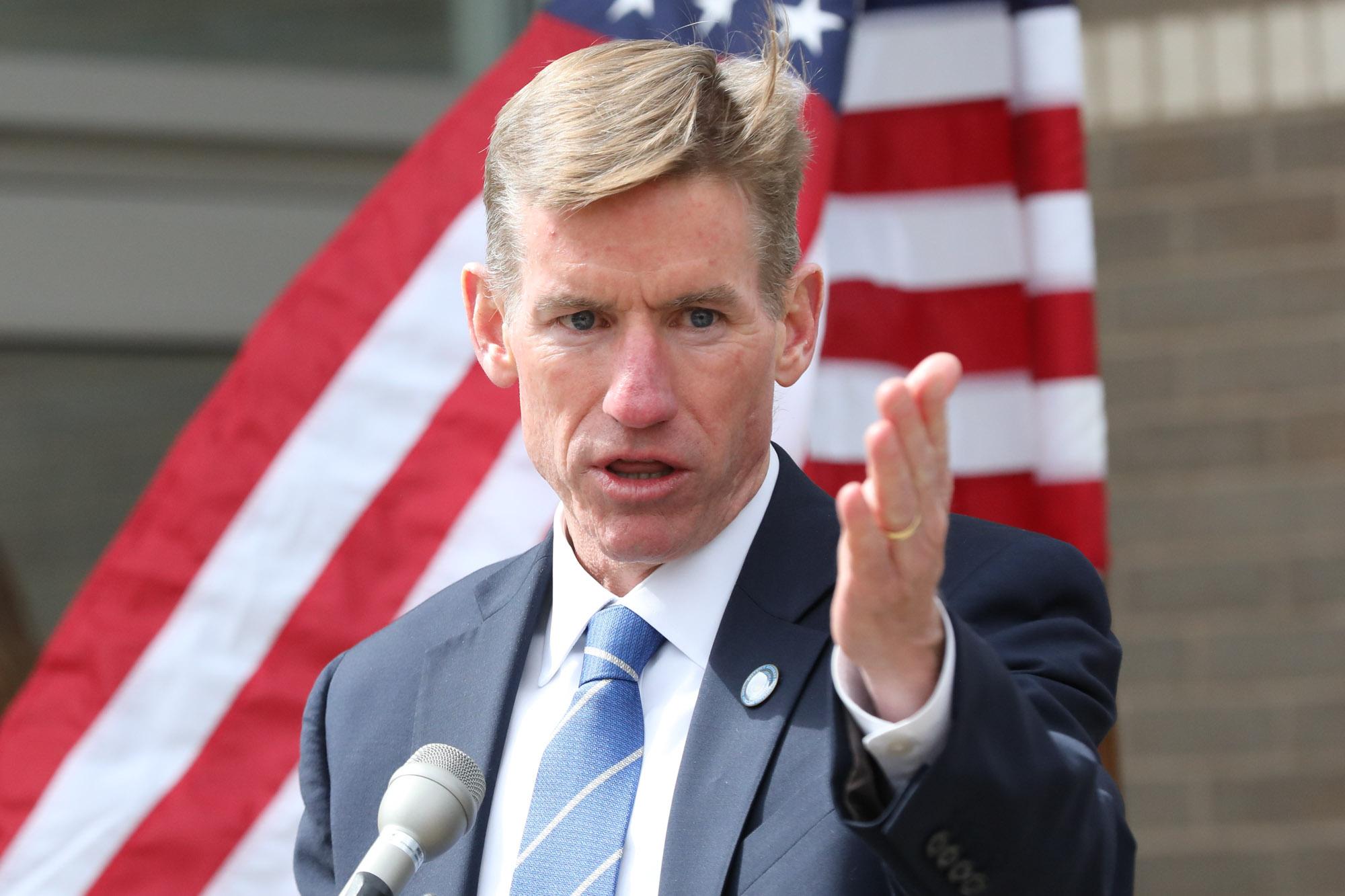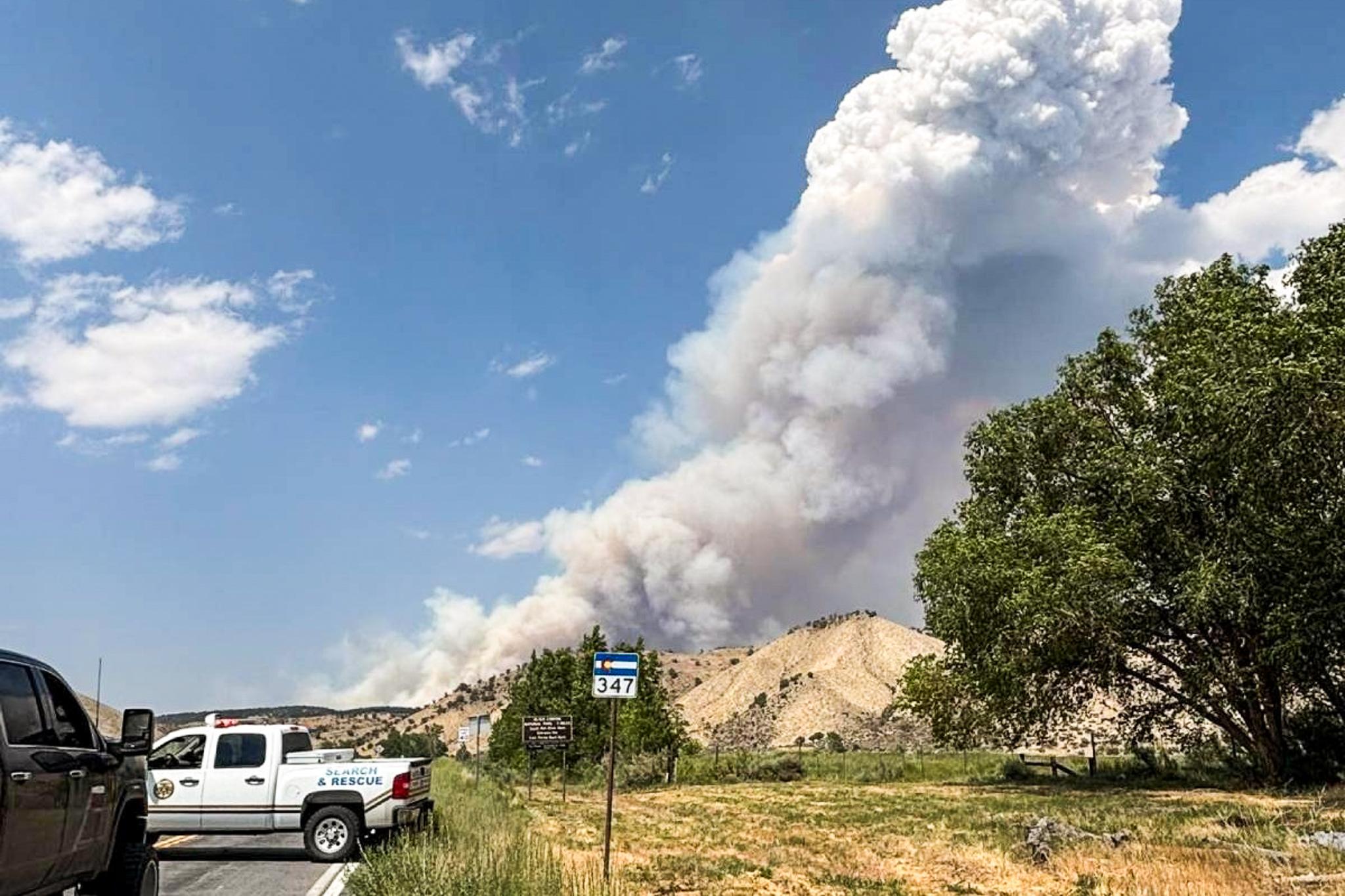
Biologist David George Haskell gathered recordings of trees for his book “The Songs of Trees.” One of the trees Haskell focuses on is a ponderosa pine near Florissant, Colorado. He made an ultrasound recording of the tree, capturing a clicking sound that's unheard by the human ear. Haskell told Colorado Matters that it's made when water, which runs from the roots to the needles, fails to replenish, and the silk-thin threads of water "break." That creates a pop, or an air pocket exploding inside the trees “veins."
Read An Excerpt Of The Book
Cottonwood Denver, Colorado 39°45'16.6" N, 105°00'28.8" W I walk on the South Platte shore on a rimy December morning. My boot soles are like twisting pepper grinders as they break the frost welds among sand grains. At the water’s edge, an ice shelf juts over the lapping river wavelets, concentric milky circles marking its overnight growth. I step too close and part of the formation shatters, a window break that alarms the mallards, gadwalls, and hooded merganser ducks cruising the waters of the confluence. Then comes another startle of birds, a slap-panicked sound that resolves to a whistled hiss as one hundred pigeons bolt from their roost on the bridge. An adult bald eagle rows its dark wings with easy power. It has no interest in the corkscrewing silliness of pigeons but swings its head to eye the flat waters downstream of the weir. The eagle sees no stunned fish so continues its path, following every bend in the water. I hear the whoff of its wings as it punches a little extra power to clear the high struts of the bridge. Gulls and Canada geese follow the same aerial path along the South Platte. Gulls snatch glances at the same fish-pregnant water as the eagle. Geese keep their eyes on more distant targets. Water from the irrigation sprinkler is the goose’s Moses, come down from the mountains through reservoirs and pipes, opening a promised land. Half of Denver’s water is used for watering ornamental plantings. In the sun-leathered parch of the western plains, Denver’s lawns and the suburbs’ well-landscaped office complexes are all that grass-grazing geese could ever desire: impounded water, thousands of hectares of fertilized and watered grass, and shrubbery in which to secrete their nests. The sky is seldom missing a skein, especially in winter, when flocks of residents and winter visitors use rivers and creeks as guides among the many feeding opportunities. Humans too once again follow the river. By building more than 130 kilometers of walking and biking trails within the city, most of which follow waterways, Denver has aligned the movements of people with many of the other animals that inhabit the city. This confluence creates more than convenient or pleasant places for people to commute, play, or relax. People who are present along the river tend to become advocates for the river. When human movement patterns start to realign with the patterns of other species— eagles, mayflies, geese, muskrat— our awareness rejoins the community of life into which we are born but which our built environments too often hide from us. In this unity of flow and bodily movement, belonging is no longer abstraction but is manifest through living choreography. The choreographer, though, is not an individual but the relationships among a multitude. The river is not a passageway for lifeless water molecules but is a life-form. I hear the words of the Sarayaku activists whom I visited in Ecuadorian Amazon: Rivers are alive and sing. This is our politics. Humans are part of this multitude. The South Platte and Cherry Creek flow from many upstream impoundments and diversions. The spreadsheets and management plans of Denver Water affect every drop of the river’s flow. Do these manipulations by humans tame the river, somehow draining it of wild nature? No. The hand that writes water-management plans, the page or screen on which words appear, the engineers who devised dams, and the flow of the South Platte in the city are as wild, natural, and at home in this world as the waters within the upstream, federally cordoned “protected” area. We too are nature. Unsunderable. To believe otherwise is to impose a duality on the world. The South Platte runs through a land created by this fissured imagination. The river gathers its first waters from mountain national parks, forests, and wilderness areas. For some people these areas are places for a grand escape, sacred groves in which to visit Nature, and the last refuge of imperiled ecosystems. For the indigenous and other peoples who were removed and barred from reentry before the federal government enacted “protection,” the same areas are postapocalyptic landscapes. Cormac McCarthy’s The Road runs through each one: Trails of Tears leading out of dehumanized lands. The Wilderness Act of 1964 preserves lands in their “natural,” “primeval” condition where “the earth and its community of life are untrammeled by man.” Indigenous communities in other parts of the world see the consequences of this philosophy that excludes “man” from the “natural” community of life. The Sarayaku oppose national parks in Ecuador, knowing the endgame of that idea. They prefer the term “living forests,” where Life is understood to include people and the knowledge that dwells within people’s many relationships with other species. In unpeopled mountains the South Platte has its headwaters. Then the river flows to the city, where it encounters another manifestation of our philosophy of nature: pipes dumping effluent. When we believe in duality, we create duality in the world. If we think that the city is unnatural, then it follows that urban river water has fallen from its natural condition. Being already “trammeled,” the water may then serve as a garbage chute. The corollary of the depopulated, protected “natural” area is, then, the industrial dump. By the 1960s, downstream of the mountain parks, the South Platte in Denver was bermed with industrial waste, scrapped cars, and heaps of castoffs from a rapidly growing city. Factories piped untreated waste directly into the waterway. Once established, a binary landscape of nature and nonnature reinforces itself. As the contrast between wilderness and reckless development grows more striking and alarming, the need for “wilderness” appears to grow while the rest of the landscape gets seemingly ever more unnatural. In such a world, cities are disdained by environmentalists but unpeopled parks, forest reserves, and designated wilderness areas are lauded. As the landscape’s duality grows, it gets harder to perceive that humans belong in the world. This piece was adapted with permission from The Songs of Trees: Stories from Nature’s Great Connectors, published by Viking, an imprint of Penguin Publishing Group, a division of Penguin Random House, LLC. Copyright © 2017 by David George Haskell. |
